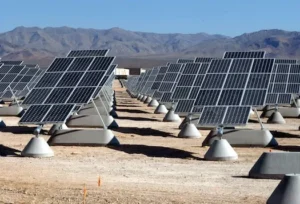In today’s rapidly evolving military landscape, energy and sustainability in Army operations have emerged as a critical factor determining battlefield success and installation resilience.
The U.S. Army is implementing forward-thinking strategies to ensure energy security while supporting both combat effectiveness and quality of life for service members and their families.
Transforming Military Energy Systems
The Army’s approach to energy management is undergoing a remarkable transformation, focusing on delivering power precisely where and when it’s needed.
Brandon Cockrell, deputy assistant secretary of the Army for energy and sustainability, recently emphasized this shift during an Association of the U.S. Army webinar.
“The Army’s focus is knowing that we have to deliver the energy when it’s needed, where it’s needed, and at the level that it’s needed,” Cockrell stated, highlighting how this principle now drives strategic planning throughout the service.
Addressing Key Energy Vulnerabilities
Military planners face multiple challenges to energy security, including:
- Cyberattacks targeting power infrastructure
- Natural disasters disrupting supply chains
- Physical attacks on energy assets
- Increasing demand for power in modern warfare
These vulnerabilities necessitate innovative solutions that enhance resilience while supporting operational requirements.
Battery Technology: A Game-Changer for Tactical Operations
Among the most promising developments in energy and sustainability in Army operations is the integration of advanced battery systems between generators and end-users. This straightforward yet effective approach yields impressive results.
“If you place a battery between the generator and the need, we’re seeing up to a 50% reduction in generator run time,” Cockrell revealed. The implications for tactical situations extend far beyond fuel savings.
Battalion commanders have become enthusiastic supporters of these systems, primarily because they dramatically improve operational security.
With batteries powering nighttime operations, units can shut down noisy generators, virtually eliminating both thermal and auditory signatures while maintaining full operational capability.
Supporting the Total Force
Energy resilience transcends purely tactical co
nsiderations. The Army recognizes that energy and sustainability initiatives must support both deployed soldiers and their families at home installations.
The Family Connection
Cockrell emphasized the importance of reliable energy systems at Army installations, noting that soldiers perform better when they know their families have secure power and resources.
This holistic approach ensures “we have the energy back at the installation, to make sure we take care of that family through the entire
deployment cycle.”
This connection between home-front stability and combat effectiveness represents a key insight: energy resilience directly contributes to lethality and readiness by allowing soldiers to focus entirely on their missions without worrying about conditions back home.
Accelerating Implementation
The Army isn’t waiting to implement these improvements. “We’re pushing hard, and we’re pushing fast,” Cockrell stated, underscoring the urgency behind these initiatives.
Furthermore, he emphasized that “everything we do is going to be through the lens of a soldier,” ensuring practical solutions that address real operational needs.
Maintaining Competitive Advantage
Energy capabilities increasingly represent a strategic advantage in great power competition.
Military planners recognize that maintaining technological superiority in energy systems provides a meaningful edge against near-peer competitors. Consequently, continued innovation in this space remains a top priority.
Future Directions
Moving forward, the Army will likely expand its focus on several promising areas:
- Portable renewable energy systems for forward operating bases
- Advanced microgrids with AI-controlled distribution
- Energy-efficient equipment designs
- Synthetic fuels and alternative energy sources
- Soldier-portable power generation and storage
Each innovation moves the service closer to its goal of providing reliable, resilient energy anywhere operations require.
Expert Editorial Comment
The emphasis on energy and sustainability in Army planning represents more than just an environmental initiative; it’s a critical component of military effectiveness in the 21st century.
By ensuring that power is available when and where needed, the Army enhances both combat capabilities and quality of life for service members and their families.
As threats evolve and technology advances, maintaining this focus will help the Army retain its competitive edge while fulfilling its obligation to soldiers.
Through continued innovation and strategic implementation, energy resilience will remain a cornerstone of American military power for decades to come


